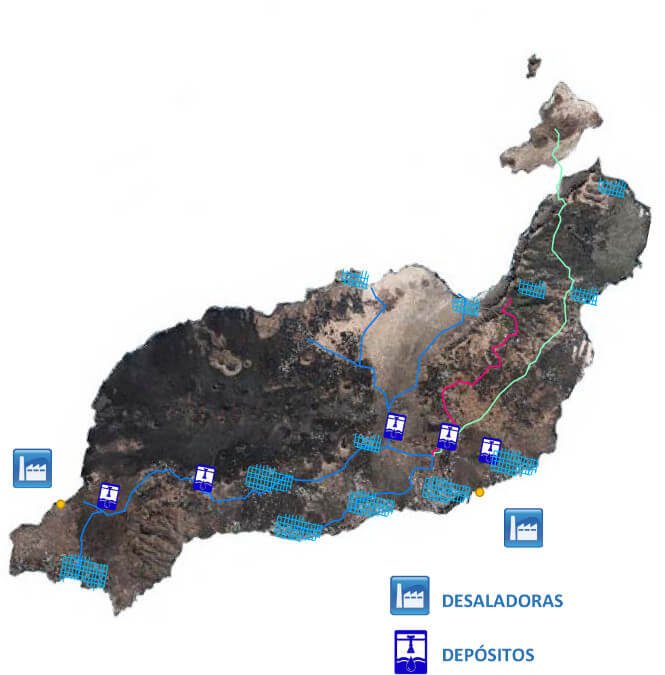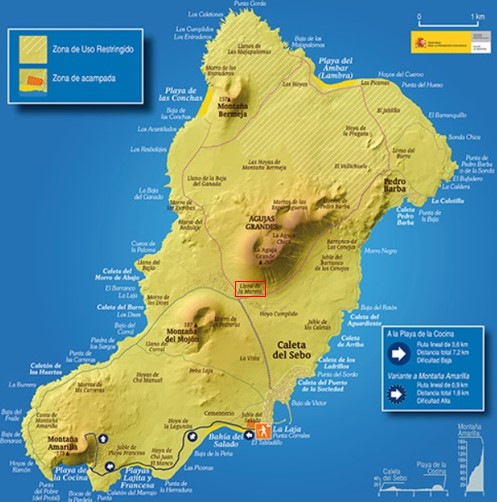Author: Eduardo Fernández González
La Graciosa is an island in the Canary Islands located in the largest marine reserve in Europe. In 1860 a fish salting factory was set up on the island and that’s when the fishing village “Caleta del Sebo” emerged. In addition to the fishing industry, its economy is now based on activities linked to tourism.
On Friday, 2 June 1995, the Ministry of Agriculture, Fisheries and Food published in the Official Gazette the order of 19 May establishing a marine reserve around the Isla de la Graciosa and the northern islets of Lanzarote: “The marine area surrounding the islets and rocks located in the north of Lanzarote constitutes, by virtue of its conditions, the habitat of an abundance of fish species and other groups, some of which are rare and even non-existent in the rest of the archipelago, as can be seen from the scientific studies carried out so far in the Canary Islands on marine reserves in the archipelago”.
The term islet is defined by the RAE as a small uninhabited island, or a very large cliff surrounded by the sea. In 2013, a “graciosero” proposed to change the name of La Graciosa, to obtain the social services that are not granted to the islets. Finally, on June 26, 2018, the Senate approved the motion declaring La Graciosa as the eighth inhabited Canary Island.
The increase in the population of about 700 and the large number of tourists at certain times of the year means that the island is often home to just over 2,000 people. Integrated water cycle management for populations of this size must be adapted to this situation.
The current supply system of La Graciosa depends on Lanzarote. Through desalination plants with reverse osmosis processes located in Lanzarote, the water is purified and distributed via submarine pipes to La Graciosa. The flow of water is not constant throughout the day, only in a certain area, so all the houses in La Graciosa have a small reservoir for storing water so that they can be supplied during the hours when they do not distribute water from Lanzarote. In August 2019, the submarine pipeline was damaged, leaving the island without a water supply. This meant that, during the repairs, which were carried out at a time of peak tourist influx, the inhabitants of La Graciosa had to share their private water reserves with the service sector. The Canary Islands are pioneers in the installation of desalination plants and there are few initiatives to build one in La Graciosa. Sporadically, funding is earmarked for study and feasibility, but the improvement in supply remains elusive.

Photo 1. Map of the supply system of Lanzarote and the connection with the island of La Graciosa (Source: “Canal Gestión Lanzarote”).
The current sanitation system consists of a cesspool for every dwelling on the island. When these tanks are filled, a tanker truck is transported to the island by boat for the removal of sludge. Even so, this system produces numerous leaks of pollutants directly to the ground, mainly due to the age of the plant. In 2016, the project to create a sewage treatment system for the island was approved as a matter of urgency. To date, the project has not been completed, nor does it expect to do so in the coming months. The island’s planning for housing, the lack of segregation between regular and tourist housing, are all signs of poor territorial planning on the island, so it is not unusual that it takes so long to implement a simple purification system. The place where the sewage treatment plant has been installed is Llanos de la Mareta, about 2 kilometers away from Caleta del Sebo. The distance requires a pumping system to transport wastewater from the town to the treatment plant. Yet this connection, five years later, is still unavailable, and the contamination of the current sanitation system remains constant.

Photo 2: Map of the island of La Graciosa with the area where the new sewage treatment plant is located (Source: Organismo Autónomo Parques Nacionales).
Because of the island’s environmental conditions and its great potential, it would be very interesting to implement a fully sustainable integrated water cycle system. The process would consist of a minimally invasive water catchment system, a renewable energy reverse osmosis desalination plant, a purification system that is as natural as possible and a water regeneration process for crop use. This would demonstrate how good management and planning of water resources for supply and sanitation, on small islands with similar climatic characteristics, is possible. The Sustainable Development Goals, particularly Goal 6, speak of ensuring the availability and sustainable management of water and sanitation for all. It is not that the system is currently null, but since it is an island that belongs to a pioneer country in desalination systems and whose progress in purification is recognized worldwide, it is striking to find such valuable spaces that have not been able to advance technologically in these processes. It is clearly a challenge that we should be prepared to accept as a country.
